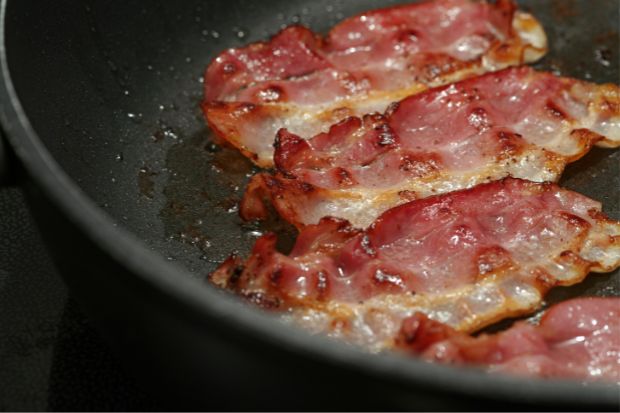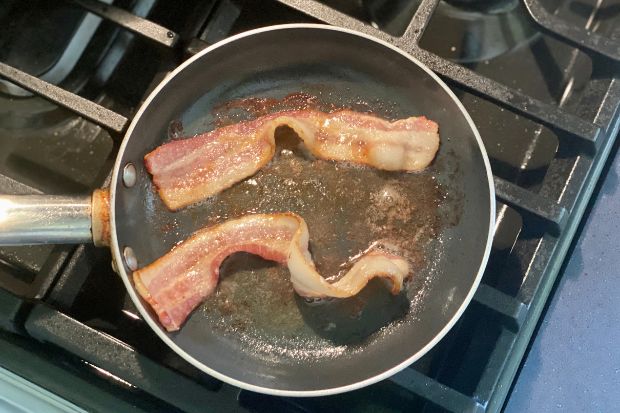Bacon is a high-protein meat that is delicious and perfect for any time of the day, whether you’re cooking bacon with eggs for breakfast or as a burger topping.
If you’re new to cooking bacon, you might be wondering, “Do I need to oil the pan for bacon?”
No, you don’t need to oil the pan for bacon. This salt-cured pork, which already contains a great deal of fat, produces its own grease when being cooked, providing the “lubricant” that cooking oil, such as olive oil, normally gives. You just need to make sure you keep the temperature low and cook the bacon slowly so that the bacon fat renders out properly.
You also need to make sure you start cooking the bacon in a cold or room-temperature pan over medium-low heat. This will give you crispy bacon strips with tender but not overly gummy fat.

If you place the hot strips into a hot pan and cook them too quickly, the outside layer of the bacon will get seared while the inside will remain intact, allowing the fat to seize and lock itself inside the bacon. When your fat is trapped inside and doesn’t melt in the pan, you end up with gummy, soggy strips of bacon. Much of the fat is supposed to render out, and this is how bacon loses some of its weight when cooked.
Using the Right Type of Pan
You also need to use the right type of pan. Not all pans are ideal for cooking bacon.
Because of its heavy bottom, which allows for the even conduction of heat, the cast iron skillet is the best pan for cooking bacon. Unlike aluminum pans, which heat up too quickly and are prone to creating random hot spots, cast iron skillets gradually heat up and evenly conduct heat, letting the bacon grease season the pan.

Cooking With Water
There’s one exception to the low-temperature rule when cooking bacon. If you want the meat to hold its moisture and remain tender, you can put a little bit of water over the meat and cook the bacon over high heat. Because the water keeps the temperature low, you don’t have to worry about the pieces of bacon getting soggy.
Once the water has evaporated, you can reduce the stove-top heat to medium-low and cook the meat until it’s browned. The result will be plump, pleasantly crisp bacon that will neither be tough nor brittle.
As you can see, you can cook bacon in its own hot grease or cook it with a little amount of water. Whichever cooking method you choose, you can rest assured you’ll have juicy, tasty, perfect bacon that will leave you wanting more.
